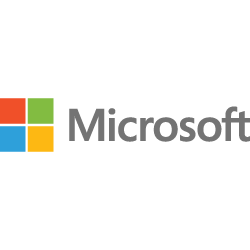4.45
Close Review
Read our in-depth Close review. Analyze its sales features, pricing, security, support, and updates. Determine its true value for money for your team.
Introduction to Close
This Close review delves into the popular CRM designed specifically for sales teams. Understanding Close means recognizing its focus on communication efficiency, integrating calls, emails, and SMS seamlessly to help reps spend more time selling. It aims to cut down administrative overhead and centralize interactions for better lead management and faster deal closure, making it a strong contender for inside sales organizations. Getting started with Close is relatively straightforward, covering the Close basics needed for quick adoption. We'll touch upon the core benefits of Close, exploring how its features like built-in calling, email automation, and reporting can streamline workflows and enhance sales performance right from the outset.
Comprehensive overview and target audience
Close CRM is fundamentally designed as a robust sales engagement platform. Its core strength lies in streamlining communication: integrating calling, email, and SMS directly within the customer relationship management interface. This focus shapes its primary appeal and defines its intended users.
The target audience for Close consists predominantly of small to medium sized businesses, particularly those with dedicated inside sales teams or startups prioritizing rapid growth. Sales representatives, sales managers, and business founders who are actively involved in the sales process find Close particularly effective. Its straightforward interface avoids unnecessary complexity, allowing teams to onboard quickly and concentrate on selling rather than navigating complicated software.
This clear focus translates into significant `Close value for money`. Teams get a powerful suite of communication tools tightly integrated with CRM functionalities specifically built for high volume sales outreach. Features like the Power Dialer, email sequences, and predictive dialing are tailored to enhance sales productivity directly impacting the bottom line for these target businesses.
Furthermore, Close demonstrates a commitment to evolving alongside user needs through regular `Close updates and new features`. This ensures the platform remains competitive and continues to deliver relevant tools that address emerging sales challenges and workflows. Users benefit from a system that grows with them.
Data protection is also paramount. Close provides essential `Close security features` designed to safeguard sensitive customer information. This includes standard practices around data encryption and access controls, offering peace of mind for businesses handling client details daily.
When undertaking a `Close pricing comparison`, potential customers often find its tier structure relatively transparent. While specific costs vary, the pricing generally aligns with the value delivered, especially for teams heavily reliant on integrated communication features. It aims to provide predictable scaling as teams expand.
To ensure users maximize the platform’s potential, extensive `Close support and training resources` are available. These resources are crucial for adoption and ongoing success. Support typically includes:
- A comprehensive online knowledge base.
- Responsive email support channels.
- Helpful articles and guides.
- Regularly updated video tutorials and webinars.
In essence, Close targets sales focused SMBs and startups seeking an efficient, communication centric CRM that offers strong value, consistent updates, reliable security, and solid support infrastructure to help them close more deals effectively.
User experience and functional capabilities
Delving into the day to day usability of Close reveals a platform meticulously designed for speed and efficiency in sales communication. Many `Close user experience insights` point towards an interface that prioritizes core sales workflows: calling, emailing, and managing leads directly. The design intentionally minimizes clutter, allowing sales representatives to focus on interaction rather than software navigation. This straightforward approach means learning `How to use Close` for its primary functions is generally a quick process, especially for teams familiar with basic CRM concepts. The onboarding is supported by comprehensive resources, which function effectively as a `Close implementation guide`, helping teams get set up and productive with minimal delay.
Functionally, Close excels in its tight integration of communication tools. The built in VoIP calling with options like the Power Dialer streamlines outreach significantly. Email capabilities are robust, featuring customizable templates, tracking, and automated sequences which save considerable time. SMS messaging is also integrated directly, providing another channel for quick follow ups within the same interface. These capabilities are central to Close’s value proposition: enabling high volume, efficient sales engagement. Reporting tools provide visibility into sales activities and performance metrics, helping managers track progress and coach their teams effectively.
Expanding Close’s capabilities involves `Integrating Close with other tools`. While its core strengths are communication and sales workflow, Close offers an API and supports integrations through platforms like Zapier. This allows businesses to connect Close with marketing automation software, customer support platforms, or other essential business systems, creating a more cohesive tech stack. The commitment to improvement is evident through regular `Close updates and new features`. The development team actively refines existing functionalities and introduces new ones, often based on user feedback, ensuring the platform stays relevant and powerful in the evolving sales landscape.
However, no platform is perfect, and potential users should be aware of `Common problems with Close`. Its intense focus on communication means it might lack some of the broader CRM features found in larger, more complex platforms, such as advanced marketing automation or project management capabilities. Teams requiring extremely granular customization or features beyond the core sales cycle might find it limiting. Furthermore, while generally intuitive, maximizing the platform requires adopting `Best practices for Close`, particularly concerning workflow automation and data management. Leveraging the available training resources is key to unlocking its full potential and avoiding common pitfalls associated with implementing any new sales tool.
Who should be using Close
Close CRM is specifically engineered for certain types of organizations and roles. If your business relies heavily on outbound and inbound communication to drive sales, Close is likely a strong fit. It excels for:
- Small to medium sized businesses SMBs prioritizing sales velocity.
- Startups focused on rapid growth and scaling their sales operations efficiently.
- Teams with dedicated inside sales representatives who manage a high volume of leads.
- Sales managers needing clear visibility into team activity and performance metrics.
- Business founders or leaders actively participating in the sales process.
A typical Close use case scenario involves a sales team needing to make dozens or hundreds of calls and emails daily. They require a system where logging these interactions is automatic or requires minimal effort, where follow ups can be scheduled and automated easily, and where all communication history email, calls, SMS is centralized within the lead’s record. This focus on communication efficiency means reps spend more time actively selling and less time bogged down by administrative tasks. The integrated calling features, email sequences, and task management are built precisely for this high intensity outreach model.
However, Close might not be the ideal solution for everyone. Organizations requiring deep marketing automation suites, complex project management tools integrated within their CRM, or highly intricate customization options beyond the core sales workflow may find it limiting. Its strength lies in its focused approach to sales engagement.
Ultimately, Close is best suited for teams who value speed, simplicity, and powerful communication tools integrated directly into their CRM. To truly harness its power, adopting Best practices for Close regarding workflow automation, data hygiene, and leveraging the communication suite is essential. If your primary goal is enabling your sales team to connect with more prospects and close deals faster through streamlined communication, Close warrants serious consideration.
Unique Features offered by Close
While Close champions simplicity and a focused user experience, it provides valuable customization options and unique features designed to maximize sales team efficiency. Its most distinctive characteristic remains the deeply integrated communication suite. Built in calling with features like the Power Dialer, seamless email tracking and automation, plus integrated SMS messaging are not mere add ons; they form the core platform, enabling reps to engage prospects quickly and persistently without leaving the CRM.
Beyond this core strength, Close offers practical ways to tailor the platform. Key customization capabilities include:
- Custom Fields: Allowing businesses to track specific data points unique to their sales process or industry.
- Smart Views: Enabling users to create dynamic lead lists based on custom criteria for targeted outreach and workflow management.
- Email Templates and Sequences: Users can create, share, and automate personalized email communication at scale.
This level of configuration supports “Customizing Close for business growth”, allowing teams to adapt the CRM as their processes evolve and scale. It strikes a balance that works well particularly for “Close for small businesses”, offering flexibility without overwhelming complexity.
Furthermore, Close understands that it operates within a broader tech ecosystem. “Integrating Close with other tools” is facilitated through a robust API and native support for platforms like Zapier. This allows businesses to connect Close with marketing automation software, customer support desks, reporting tools, and other essential applications. This extensibility ensures that Close can fit neatly into an existing workflow, enhancing its value rather than operating in isolation. These focused customization options and integrations solidify Close’s position as a powerful, communication first CRM for sales driven teams.
Pain points that Close will help you solve
Many sales teams struggle with inefficiencies that directly impact their ability to close deals. Close CRM is designed specifically to tackle these common frustrations head on. If your team feels bogged down by administrative work instead of actively selling, Close offers a potent solution. Its core design automates activity logging for calls, emails, and SMS, drastically reducing manual data entry and freeing up valuable selling time.
Another significant pain point is scattered communication and lead information. Juggling different tools for calling, emailing, and managing contacts leads to lost context and missed opportunities. Close centralizes every interaction directly within the lead’s profile. This unified view ensures reps have the full picture instantly, enabling more relevant conversations and timely follow ups. Forget digging through separate inboxes or call logs; everything is accessible in one place.
Missed follow ups represent lost revenue. Close combats this with powerful workflow automation. Features like email sequences allow you to nurture leads systematically without manual effort. Task reminders and Smart Views help prioritize outreach, ensuring no promising lead falls through the cracks. This structured approach turns chaotic follow up processes into reliable engagement engines.
Scaling sales operations effectively presents challenges, especially regarding tooling. Close addresses this by offering a focused yet adaptable platform. Its suitability for various team structures showcases the flexibility of “Close for different businesses sizes”, from nimble startups to established SMBs. Furthermore, the ability for “Customizing Close for business growth” through custom fields and tailored views means the platform can evolve alongside your sales process. You are not locked into a rigid system; Close adapts to your needs.
Finally, tool fragmentation hinders efficiency. Many businesses struggle with CRMs that dont play well with other essential software. Close alleviates this through “Integrating Close with other tools” using its API and Zapier connections. This allows you to connect Close seamlessly with your marketing automation platforms, customer support systems, or other critical applications, creating a unified and efficient tech stack that supports your entire sales cycle.
Scalability for business growth
As your business expands, your tools must grow with you. Close is built with scalability in mind, ensuring it can support your team as you move from a small startup to a growing SMB and beyond. Its architecture is designed to handle increasing volumes of calls, emails, and contacts without compromising the speed and efficiency that define its user experience. This foundation means you won’t outgrow the platform quickly simply because your sales activities ramp up.
Close facilitates this growth through several key aspects. Its tiered pricing structure is generally predictable, allowing businesses to budget for expansion as they add more users or require more advanced features. The focus on core sales communication remains constant, meaning the fundamental workflows that make your team efficient can scale effectively. Adding new team members is straightforward, thanks to the relatively simple interface and available training resources, minimizing the friction often associated with scaling sales tools.
Furthermore, the platform’s adaptability plays a crucial role. “Customizing Close for business growth” allows you to modify fields, views, and processes as your sales strategies evolve or target markets shift. You aren’t locked into a rigid system. As your team structure or operational complexity increases, “Customizing Close for business scalability” ensures the CRM adapts to handle these changes smoothly. This might involve refining automated workflows or integrating with more sophisticated third party tools via the API or Zapier to build a more comprehensive tech stack that supports a larger, more complex operation. Close is designed not just for today’s sales needs but as a partner for future expansion.
Final Verdict about Close
Close CRM establishes itself as a remarkably focused and efficient sales engagement platform. Its defining characteristic is the deep integration of essential communication channels: calling, email, and SMS are not just features but the core foundation of the user experience. This approach directly combats common sales frustrations by automating activity logging and centralizing all interactions within a lead’s record. The result is a significant reduction in administrative burden, freeing up sales representatives to concentrate on what matters most: engaging prospects and closing deals.
The platform proves most valuable for small to medium sized businesses and startups, especially those relying on inside sales teams that handle a high volume of communication. Its relatively simple interface facilitates quick onboarding, while powerful tools like the Power Dialer, email sequences, and Smart Views actively enhance productivity and streamline workflows. While it offers practical customization through custom fields and templates, allowing adaptation for business growth, its focus remains steadfastly on optimizing the sales communication process.
Potential users should recognize that Close’s strength is its specialization. Organizations requiring extensive built in marketing automation suites, complex project management tools, or highly elaborate customization beyond the primary sales cycle might find it less suitable than broader CRM platforms. Its excellence lies in sales engagement efficiency, not in being an all encompassing business management solution. The platform scales effectively, supporting teams as they grow, and offers solid integration capabilities via its API and Zapier, ensuring it can connect with other vital business software.
Our final verdict on Close is very positive for the specific needs it addresses. If your business prioritizes empowering its sales team with a fast, intuitive, communication focused tool designed explicitly to increase outreach efficiency, automate follow ups, and ultimately accelerate the sales cycle, Close is a formidable contender. It delivers significant value for money, particularly for SMBs and startups whose success hinges on maximizing selling time and streamlining their sales process effectively. Close understands its target audience and serves them exceptionally well.
Advantage
Disadvantage
Integrated calling, SMS, and email features
Powerful sales automation streamlines workflows
Intuitive interface simplifies daily use
Actionable reporting tracks sales performance effectively
Designed specifically for inside sales team success
Disadvantage
Higher price point than some alternatives
Steeper learning curve for new users
Can feel bulky for smaller hands
Requires specific software for full features
Battery life drains quickly with heavy use
Rating
Startup
$59 per Month Paid Monthly
- Up to 3 users
- Lead management
- Opportunity management
- Contact management
- 2-way email sync
- Built-in global calling
- Built-in SMS
- Pipeline view
- Reporting
- API access
- Zapier integration
Professional
$109 per Month Paid Monthly
- All features in Startup+
- Bulk emailing
- Power Dialer
- Call Sequences
- Email Sequences
- Custom Activities
- Grouped user permissions
Business
$159 per Month Paid Monthly
- All features in Professional+
- Call coaching
- Custom Roles & Permissions
- Custom Objects
- Built-in call recording
- Call transfer
Startup
$588 per Year Paid Yearly
- Up to 3 users
- Lead management
- Opportunity management
- Contact management
- 2-way email sync
- Built-in global calling
- Built-in SMS
- Pipeline view
- Reporting
- API access
- Zapier integration
Professional
$1188 per Year Paid Yearly
- All features in Startup+
- Bulk emailing
- Power Dialer
- Call Sequences
- Email Sequences
- Custom Activities
- Grouped user permissions
Business
$1788 per Year Paid Yearly
- All features in Professional+
- Call coaching
- Custom Roles & Permissions
- Custom Objects
- Built-in call recording
- Call transfer
Product Support
Web Based
Windows
Mac OS
Linux
Android
iOS
Phone Support
Email/Help Desk
AI Chat Bot
Live Support
24/7 Support
Forum & Community
Knowledge Base
Live Online
Documentation
Videos
In Person
Webinars
Company: Close.io, Inc.
Email: support@close.com
Address:
100 Montgomery St, Suite 2450, San Francisco, CA 94104Phone: Not Available
Implementation
Web Based
Windows
Mac OS
Linux
Android
iOS
Support
Phone Support
Email/Help Desk
AI Chat Bot
Live Support
24/7 Support
Forum & Community
Knowledge Base
Training
Live Online
Documentation
Videos
In Person
Webinars
Group text
Company: Close.io, Inc.
Email: support@close.com
Address:
100 Montgomery St, Suite 2450, San Francisco, CA 94104
Phone: Not Available
Alternative Products
Web Based, Windows, Mac OS, Android, iOS
Documentation, Videos, Webinars, Live Online
Email/Help Desk, Live Support, Knowledge Base
Frequently Asked Questions
What exactly does Close do?
Close is a sales-focused Customer Relationship Management (CRM) platform designed to help sales teams communicate more effectively and close more deals by centralizing outreach, tracking, and reporting.
How can Close help me improve my sales process?
Close streamlines your sales process by consolidating communication channels (calling, emailing, SMS) within the CRM, automating data entry, providing powerful search and filtering for lead management, tracking all interactions automatically, and offering clear pipeline visibility and reporting to identify bottlenecks and opportunities.
Who is Close best suited for (e.g., SMBs, enterprise, specific industries)?
Close is best suited for small and medium-sized businesses (SMBs) with dedicated inside sales or remote sales teams that prioritize high-volume outreach and efficient communication workflows; it’s less commonly used by large enterprises with complex, multi-departmental needs.
What are Close's key features for sales teams?
Key features include built-in global calling with power and predictive dialers, email tracking and templates, bulk emailing, integrated SMS messaging, a visual sales pipeline, activity reporting, task management, lead scoring, and robust search capabilities.
How does Close integrate with other tools I use?
Close offers native integrations with tools like Zapier (connecting to thousands of apps), Slack, Zoom, Calendly, Mailchimp, and provides a well-documented API for custom integrations.
What are the pricing plans for Close?
Close offers several tiered pricing plans (Starter, Basic, Professional, Business) based on features and user needs, typically billed per user per month, with discounts for annual billing; they usually offer a free trial period.
Is Close easy to set up and use?
Yes, Close is generally considered easy to set up and use, featuring an intuitive interface focused on core sales activities, requiring minimal configuration to get started with calling, emailing, and pipeline management.
Is Close worth the investment for my business?
Whether Close is worth the investment depends on your specific needs; if your business relies heavily on high-volume outbound/inbound sales communication and values efficiency, streamlined workflows, and integrated calling/emailing/SMS, then Close often provides significant ROI by boosting productivity and helping teams close more deals.





